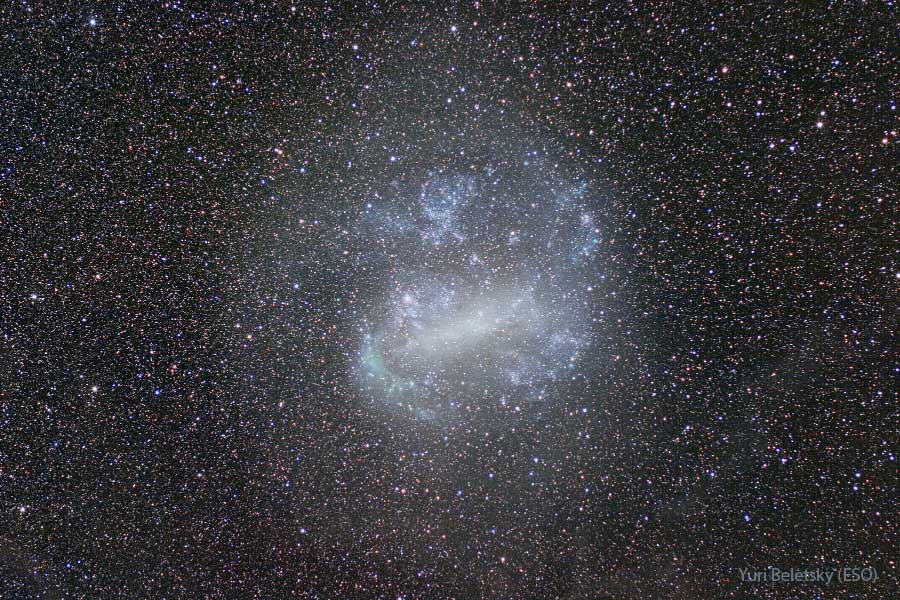2023年3月7日
Deep Field: The Large Magellanic Cloud
Image Credit & Copyright: Yuri Beletsky (Carnegie Las Campanas Observatory, TWAN)
Explanation: Is this a spiral galaxy? No. Actually, it is the Large Magellanic Cloud (LMC), the largest satellite galaxy of our own Milky Way Galaxy. The LMC is classified as a dwarf irregular galaxy because of its normally chaotic appearance. In this deep and wide exposure, however, the full extent of the LMC becomes visible. Surprisingly, during longer exposures, the LMC begins to resemble a barred spiral galaxy. The Large Magellanic Cloud lies only about 180,000 light-years distant towards the constellation of the Dolphinfish (Dorado). Spanning about 15,000 light-years, the LMC was the site of SN1987A, the brightest and closest supernova in modern times. Together with the Small Magellanic Cloud (SMC), the LMC can be seen in Earth’s southern hemisphere with the unaided eye.
Your Sky Surprise: What picture did APOD feature on your birthday? (post 1995)
Tomorrow’s picture: artificially bright
深场图像: 大麦哲伦星系
图像提供与版权: Yuri Beletsky (Carnegie Las Campanas Observatory, TWAN)
说明: 这是螺旋星系吗?非也,它是我们银河系最大的伴星系–大麦哲伦星系(LMC)。由于大麦哲伦星系的外观通常相当零乱,故其分类为矮不规则星系。然而,在这幅深场及大视野图像里,大麦哲伦星系的完整模样变得清楚可辨。令人惊讶的是在长曝光图像里,LMC竟然长得像个棒旋星系。大麦哲伦星系位在剑鱼座(鬼头刀座)方向,约180,000光年远之处。宽约15,000光年的大麦哲伦星系,是SN1987A发生之处,而SN1987A则是现代最亮最邻近的超新星。大麦哲伦星系及小麦哲伦星系都是南半球肉眼可见的天体。
你的天空惊喜: APOD在你生日那天发布了什么照片?(1995年后)
明日的图片: artificially bright







